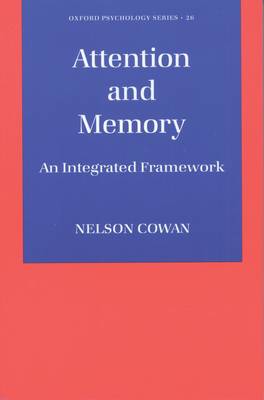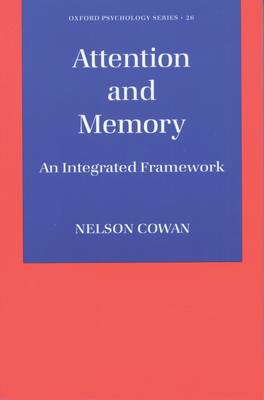
- Afhalen na 1 uur in een winkel met voorraad
- Gratis thuislevering in België vanaf € 30
- Ruim aanbod met 7 miljoen producten
- Afhalen na 1 uur in een winkel met voorraad
- Gratis thuislevering in België vanaf € 30
- Ruim aanbod met 7 miljoen producten
Zoeken
Omschrijving
For decades, the fundamental processes underlying memory and attention have been understood within an "information processing" framework in which information passes from one processing stage to another, leading eventually to a response. More recently, however, the attempt to build a general theoretical framework for information processing has been largely supplanted in favor of two more recent approaches: parallel/connectionist models of processing and direct investigations of brain function. In Memory and Attention, cognitive psychologist Nelson Cowan reconciles theoretical conflicts in the literature to presents an important, analytical update of the traditional information-processing approach by modifying it to incorporate the last few decades of research on memory, attention, and brain functioning. Throughout, the author cogently considers and ultimately refutes recent challenges to the fundamental assumption of the existence of special short-term memory and selective attention faculties. He also draws a new distinction between memory processes operating inside and outside of the focus of attention. Coherent and balanced, the book offers a clearer understanding of how memory and attention operate together, and how both functions are produced by brain processes. It will be welcomed by students and researchers in cognitive psychology.
Specificaties
Betrokkenen
- Auteur(s):
- Uitgeverij:
Inhoud
- Aantal bladzijden:
- 344
- Taal:
- Engels
- Reeks:
- Reeksnummer:
- nr. 26
Eigenschappen
- Productcode (EAN):
- 9780195119107
- Verschijningsdatum:
- 15/01/1998
- Uitvoering:
- Paperback
- Formaat:
- Trade paperback (VS)
- Afmetingen:
- 157 mm x 233 mm
- Gewicht:
- 453 g

Alleen bij Standaard Boekhandel
+ 244 punten op je klantenkaart van Standaard Boekhandel
Beoordelingen
We publiceren alleen reviews die voldoen aan de voorwaarden voor reviews. Bekijk onze voorwaarden voor reviews.











